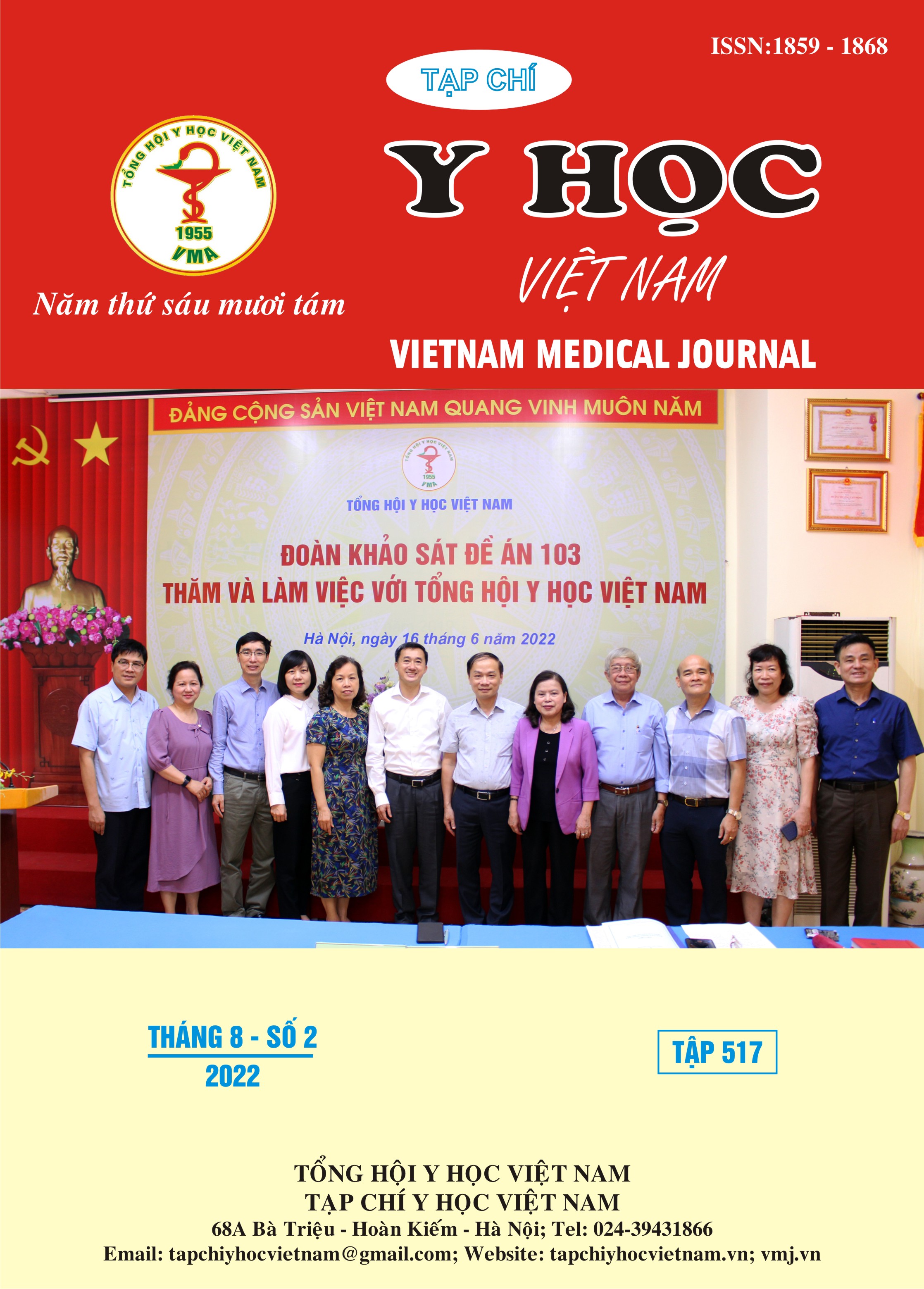ENDOSCOPIC IMAGES AND HISTOPATHOLOGY OF COLORECTAL POLYPS OVER 10MM IN SIZE
Main Article Content
Abstract
Objectives: To study endoscopic images and histopathology of colorectal polyps over 10mm in size. Subjects and methods: A descriptive cross-sectional study on 104 patients at Gastroenterohepatology Center - Bach Mai Hospital from January 2017 to December 2021. Colonoscopy was performed to evaluate characteristics of polyps over 10mm in size and performing polypectomy to evaluate histopathology according to WHO 2010 criteria. Result: 89.2% of polyps in proximal colon with stalk is the most common shape (accounting for 82.1%). There are 20,2% polyp over 20mm in size. Adenomatous polyps accounted for a high rate of 84.5%, mainly tubular adenoma (91.6%) with 100% having dysplasia of various degrees, of which 18.3% were high grade dysplasia. Size is the only relationship between polyp and the degree of dysplasia on histopathology of adenomatous polyps. Conclusion: Colorectal polyps over 10mm in size are mainly adenomatous ones, uncommon villous component and not relationship with site, shape, size of polyp in colonic endoscopy.
Article Details
Keywords
Colorectal polyps, endoscopy, histopathology
References
2. Silva S.M., Rosa V.F., dos Santos Acn et al. (2014). Influence of patient age and colorectal polyp size on histopathology. Arq Bras Cir Dig, 27(2): 109-113.
3. Shaukat A., Kaltenbach T., Dominitz J.A. et al (2020). Endoscopic recognition and management strategies for malignant colorectal polyps: Recommendations of the US Multi-Society Task Force on Colorectal Cancer. Gastroenterology, 159: 1916–1934.
4. Paris Workshop Participants (2003). The Paris endoscopic classification of superficial neoplastic lesions: esophagus, stomach, and colon. Gastrointestinal Endoscopy, 58(6): S1-S43
5. Flejou J.F. (2011). WHO Classification of digestive tumors: the fourth edition. Ann Pathol, 31(5 Suppl): S27-31.
6. Võ Hồng Minh Công (2015). Nghiên cứu đặc điểm lâm sàng, nội soi, mô bệnh học, biểu lộ protein P53, Ki67, Her-2/Neu trong ung thư và polyp đại trực tràng lớn hơn hoặc bằng 10mm. Luận án Tiến sĩ y học, Học viện Quân y.
7. Muto T., Kamiya J., Sawada T. et al (1985). Small flat adenoma of the large bowel with special reference to its clinicopathologic features. Dis Colon Rectum, 28: 847-851.
8. Vũ Văn Khiên, Trịnh Tuấn Dũng, Nguyễn Khắc Tấn và CS (2016). Nghiên cứu đặc điểm lâm sàng, nội soi, mô bệnh học và hiệu quả cắt polyp đại trực tràng kích thước trên 2cm qua nội soi. Tạp chí y học Việt Nam, 2: 158-163.
9. Basnet D., Makaju R., Gurung R.B. et al (2021). Colorectal polyps: A histopathological study in tertiary care center. Nepalese Med Journal, 4: 414-418.
10. Tamannna K., Effat N., Wei R.J. et al (2016). Histological profile and risk factor analysis of colonic polyp: distal villous type is common predictor of high grade cytological dysplasia. Gastroenterol Hepatol Open Access, 4(1): 28-31.


